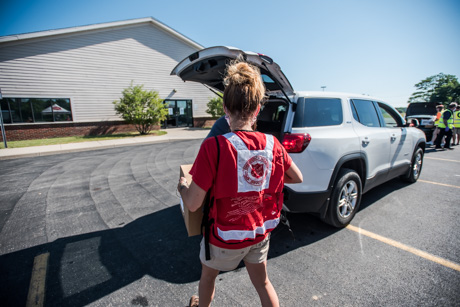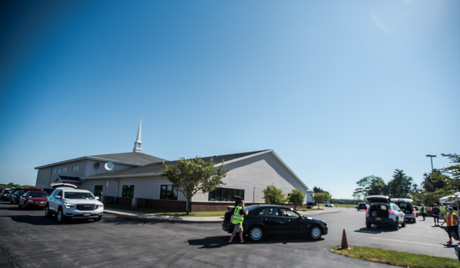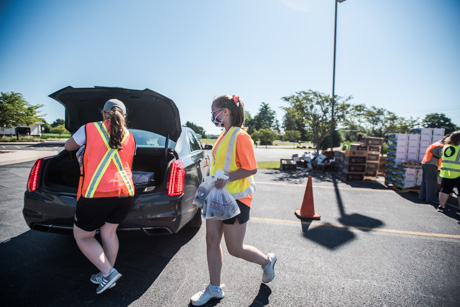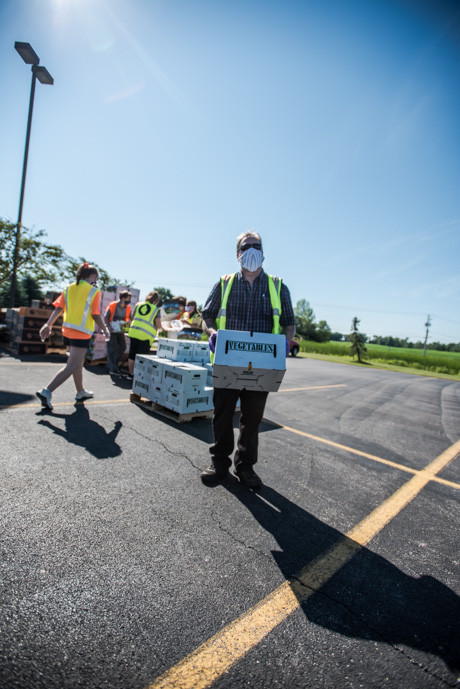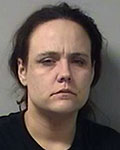Press release:
Governor Andrew M. Cuomo on Tuesday announced an emergency rental assistance program that will help keep low-income families throughout New York in their homes.
The program, which is designed to reach those individuals and families with the greatest need, will provide direct aid for tenants who lost income due to the COVID-19 pandemic. The program is funded through the Coronavirus Relief Fund, which is part of the CARES Act.
The program is administered by New York State Homes and Community Renewal and access to program applications will be available here on Thursday, July 16.
"Since day one we made it clear that no New Yorkers should be thrown on the streets because of hardships caused by this pandemic," Governor Cuomo said. "It's critically important that people are able to stay safely in their homes as we progress through our data-driven, phased reopening, and the COVID Rent Relief Program reinforces that commitment with direct assistance to those in the greatest need."
Senate Majority Leader Andrea Stewart-Cousins said, "Despite the progress we have made in fighting COVID-19, millions of New Yorkers are struggling because of this virus and the economic crisis. Providing direct aid to overburdened renters will help these New Yorkers stay in their homes and be able to make ends meet. I applaud Senator Brian Kavanagh for advancing this legislation, my Senate Democratic Majority for passing it, and Governor Cuomo for signing it into law. While this effort will offer some relief, we know that government needs to step up and provide more support during this difficult time. We are going to keep advancing meaningful legislation to help New Yorkers, and we need the federal government to work with us and provide the resources our state needs."
Assembly Speaker Carl Heastie said, "For many New Yorkers, the COVID-19 pandemic has made the challenges of securing affordable housing even greater. The Assembly Majority has fought tirelessly for years to keep New Yorkers in their homes and in the communities that they helped shape. With many New Yorkers still out of work, we still need assistance from the federal government to help states deal with significant fiscal challenges. We must do everything in our power to help New York families. This rental assistance program, while still not enough to meet the tremendous needs that exist, is a step forward to lifting a financial burden off of our most vulnerable families. We will continue to look to do more to help people remain in their homes during this unprecedented time."
Under the new program, eligible households will benefit from a one-time rental subsidy paid directly to landlords and housing providers. Tenants are not required to repay this assistance.
To qualify for the program, applicants must meet all of the eligibility requirements:
- Must be a renter with a primary residence in New York State.
- Before March 1, 2020 and at the time of application, household income (including unemployment benefits) must be below 80 percent of the Area Median Income, adjusted for household size. Applicants can find the Area Median Income for their county, based on household size, on HCR's website here.
- Before March 1, 2020 and at the time of application, the household must have been "rent burdened," which is defined as paying more than 30 percent of gross monthly income towards rent.
- Applicants must have lost income during any period between April 1, 2020 and July 31, 2020.
- The application period will be open for two weeks. Residents can apply any time during the two-week period.
HCR will prioritize households with greatest economic and social need, accounting for income, rent burden, percent of income lost and risk of homelessness. The rental assistance payment will cover the difference between the household's rent burden on March 1, 2020 and the increase in rent burden during the period the household is applying for assistance. Households can apply for up to four months in rental assistance for the months of April through July. The program is open to households that rent apartments, single-family homes, manufactured homes and manufactured home lots.
Households with at least one household member with U.S. Citizenship or eligible immigration status are qualified to receive the subsidy. Tenants currently receiving a Section 8 Housing Choice Voucher for housing costs or who reside in public housing are not eligible for RRP assistance.
The COVID Rent Relief Program builds upon Governor Cuomo's efforts to protect New York's renters during the coronavirus pandemic. This includes a statewide moratorium on COVID-related residential or commercial evictions; banning late payments or fees for missed rent payments during the eviction moratorium; and allowing renters facing financial hardship due to COVID-19 to use their security deposit as payment and repay their security deposit over time.
More information about the COVID Rent Relief Program, including Frequently Asked Questions, is available here.
HCR Commissioner RuthAnne Visnauskas said, "Families and individuals who were already rent burdened, or living paycheck-to-paycheck, were particularly vulnerable to the sudden loss in income that resulted from the coronavirus pandemic. Governor Cuomo's immediate actions to protect New Yorkers against eviction and foreclosure provided much-needed security during an unimaginable health crisis. The COVID Rent Relief Program builds upon the State's efforts to alleviate the hardship faced by so many tenants with a one-time rental subsidy. By helping our fellow New Yorkers remain secure in their homes, we can continue on our road to economic recovery."
Senator Brian Kavanagh (D-Manhattan and Brooklyn), chair of the Senate Housing Committee and prime sponsor of the bill, said, "Since this pandemic started, New York has fought back hard to save lives and keep people safe, but we haven't done nearly enough for the many New Yorkers who have been struggling to pay rent and stay in their homes. While we need a lot more funding to cover a much wider range of people, including those currently homeless and those whose immigration status makes it difficult to access other forms of assistance, this program is an important first step toward supporting New Yorkers in need of relief. I thank Commissioner Visnauskas and the diligent staff at HCR for their efforts in launching this program quickly, just four weeks after we passed the Emergency Rent Relief Act."
Assemblyman Steven Cymbrowitz (D-Brooklyn), chair of the Assembly's Housing Committee, said, "On behalf of all New Yorkers, I am pleased to see the COVID Rent Relief Program up and running. Tenants and landlords face enormous financial challenges brought about by our ceaseless fight against this virus. Our responsibility to reopen safely must be balanced by the continuing need to fight homelessness and to keep New Yorkers safe in their own homes. By prioritizing households with the greatest need, this program will help enable our recovery while we wait for Congress to act and provide more essential relief."
Representative Nita Lowey said, "The COVID Rent Relief Program, which is made possible with the federal funds I helped secure for New York in the CARES Act, is an important step in providing critical assistance to communities and families that were hardest hit by this pandemic. I commend Governor Cuomo and the State Legislature for taking decisive action to protect renters around the state from eviction who continue to suffer from the financial impact of the economic shutdown. Housing is foundational to health and safety, and I will continue working to secure the federal relief New Yorkers need to ensure our health, safety, and economic security."
Representative José Serrano said, "Affordable housing was a serious issue before this crisis, and it has been exacerbated during the coronavirus pandemic. Too many families in the Bronx and elsewhere are struggling to make ends meet, pay their rent, and cover other basic expenses. We need to do everything possible to prevent a housing crisis on top of the public health and economic crises that are ongoing. Made possible thanks to the CARES Act passed in Congress, the COVID Rent Relief Program will provide much needed relief to help those who need it most to pay rent and keep a roof over their heads. I thank Governor Cuomo for his leadership in developing this important program."
Representative Carolyn B. Maloney said, "The COVID Rent Relief Program is a much needed, common-sense approach that will help renters experiencing economic strain brought on by the pandemic. New York State is once again leading the way and the Senate should follow suit by passing the House's Heroes Act, which includes a $100 billion fund for rent relief, and H.R. 7301, the Emergency Housing Protections and Relief Act. Nobody should lose sleep worried about how they will keep a roof over their heads, especially during a pandemic. We must continue to take steps to help our nation weather this storm and deliver meaningful relief to the American people when they need it most."
Representative Nydia M. Velázquez said, "So many New Yorkers are struggling right now as a result of the pandemic and they are faced with an unbearable choice between paying rent, keeping their lights on or putting food on the table. The COVID Rent Relief Program will deliver critical assistance but this is just a small part of the overall need. I will continue to fight for additional federal funding to ensure that no New Yorker is forced from their home during an unprecedented health and economic crisis."
Representative Hakeem Jeffries said, "New York has borne the burden of the COVID-19 public health crisis, and our communities have experienced unthinkable pain, suffering and death. As we start to reopen the state carefully, we must ensure that the people and communities with the most need receive assistance to help make their ends meet. The emergency rental assistance program will reach those who are most at risk of losing the roof over their heads. This is an extraordinary crisis, and I thank Governor Cuomo for his extraordinary leadership."
Representative Grace Meng said, "For months, I have led calls for relief to be provided to New Yorkers struggling to pay their rent. I thank the Governor for establishing this program and look forward to doing more to help additional New Yorkers who have been forced to endure this severe financial burden through no fault of their own. But this is a first step forward to solving a major issue and I will continue to use my spot on the House Appropriations Committee, which funds the federal government-to combat the renter crisis. Nobody in our state should be kicked out of their homes due to the coronavirus. I also call on the Senate to follow the House in passing the Heroes Act which contains more funding for rent relief."

